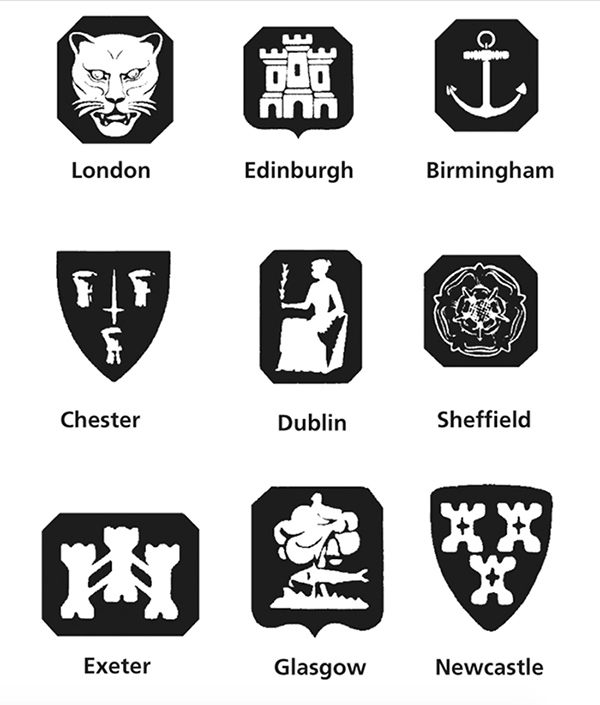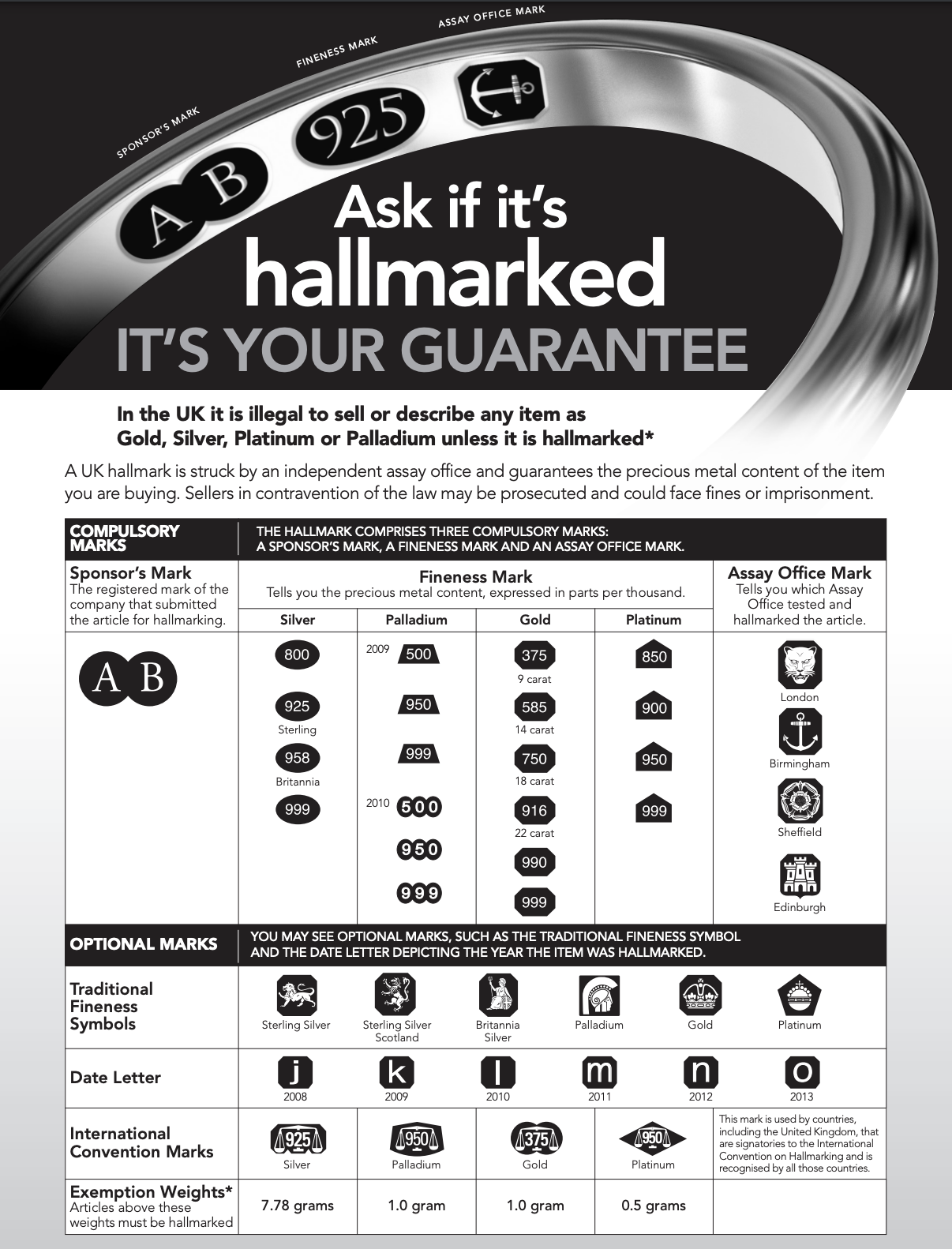Hallmarked in the UK
Stamped & Tested
Nowhere else in the world are consumers more highly protected than in the UK. The UK is one of only a few countries in the world that have compulsory statutory hallmarking. This means that every item sold as precious metal, ie gold, silver or platinum must have been tested and hallmarked by an independent third-party Assay Office to guarantee that the precious metal is of the fineness stated. All pieces of jewellery within the minimum weight sold by Lloyds Family Jewellery are hallmarked in the UK to assure fineness and quality.
The law applies to all precious metals sold in the UK , regardless of where it may have been manufactured. The only exemptions are items which fall beneath the specified weight thresholds which are 1 gram for gold, 7.78 grams for silver and 0.5 grams for platinum.


History & Hallmarks
The history of hallmarking dates back to 1300 when a Statute of Edward I instituted the assaying (testing) and marking of precious metals. The original aim of the system remains unchanged; the protection of the public against fraud and of the trader against unfair competition. Indeed, hallmarking is one of the oldest forms of consumer protection.
Hallmarking is as necessary today as it was in 1300 because when jewellery and silverware are manufactured, precious metals are not used in their pure form, as they are too soft. Gold, Silver, Platinum and Palladium are always alloyed with copper or other metals to create an alloy that is more suitable to the requirements of the jeweller. Such an alloy needs to be strong, workable, yet still attractive.
Owing to the high value of Gold, Platinum, Palladium and silver, there are significant profits to be gained by reducing the precious metal content of an alloy at the manufacturing stage. Base metal articles plated with a thin coat of gold or silver look like the same articles made wholly of precious metal, at least until the plating wears, and even an expert cannot determine the quality or standard of precious metal items by eye or touch alone.
The Statute of 1300 allowed the Wardens of the Company of Goldsmiths in London to go out to workshops in the City and assay silver and gold. However, only silver that met the required standard was marked at this time, with the symbol of the leopard’s head which is still the mark of the London Assay Office today. Gradually gold came to be marked in the same way as silver.
In 1363, the maker’s mark was added to the hallmark. To begin with, most of them were pictorial but as literacy rates rose, the system of using the maker’s initials was introduced.
Quite some time after, in 1478, the Wardens of Goldsmiths set themselves up in Goldsmiths Hall and paid a salaried assayer to test and mark items submitted to them. This led to the introduction of the date letter in order to make successive assayers accountable for their work.
Birmingham Assay Office was founded by an Act of Parliament in 1773. It had become clear by this time to the silversmiths of Birmingham, especially Matthew Boulton, that their trade would never truly prosper without an Office of their own. Boulton lobbied Parliament vigorously and was finally rewarded by the Hallmarking Act 1773, which founded the Birmingham Assay Office.
Hallmarking of precious metals is still a legal requirement in the UK and in 2006 Birmingham Assay Office is the largest Assay Office in the World, handling over 12 million articles per year.
Hallmark Guide


